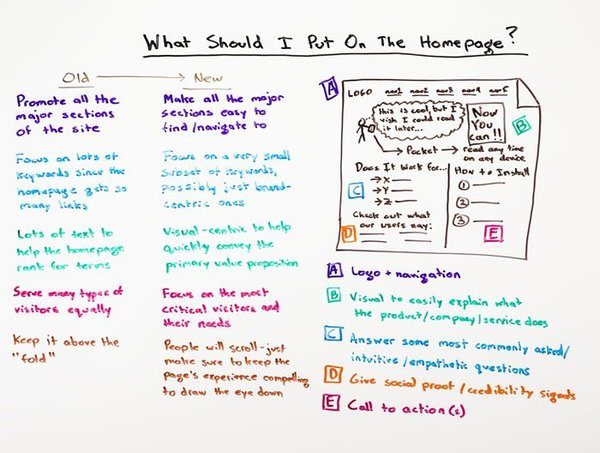Brands as publishers? Rubbish!
Your brand doesn’t need to be a publisher to be successful at content marketing. In fact, publishing your own content could actually be a detriment to your business.
I attacked the logic of brands as publishers before, making the point that publishing content is one thing but attempting to adopt a publishing mindset is foolhardy and unnecessary.
The attempt to become a publisher is needlessly wrecking many brands who’d be better off getting their content marketing feet under them before attempting to become world-class sprinters overnight.
In fact, many businesses would be better off focused on creating less content.
Your brand’s most important content won’t be created in-house
Think about it: Your brand’s content not only comprises what you create and share; it also includes content created for (e.g., user-generated blog post, blog comments, testimonials, etc.) and about (e.g., comments on review sites, social mentions, editorial mentions, etc.) your brand.
Therefore, a priority should be placed on having more content created for and about you as opposed to creating the lion’s share of your content.
For example, no matter how many blog posts a restaurant owner, plumber or SaaS founder creates, the most valuable content will be that which is created off his or her site and by others, at least initially.
That restaurant owner or plumber would be doing the best job for his or her bottom line by blogging less and focusing more on creating an enviable customer experience, making sure every customer leaves happy.
The SaaS founder would help the bottom line most by delivering a first-in-class product backed by best-in-class service.
By doing so, he or she is fostering the creation of content that’ll move the needle for the brand.
Not everyone agrees with this logic; I’m counting on you to avoid the hype.
Peddling the flawed logic of ‘brands as publishers’
Some marketing agencies are telling time-starved business owners that being a brand publisher is so vital to their success they have no choice but to push out content at the expense of focusing on their businesses.
(Notice how they’ve jumped right over telling businesses to simply produce and share content. No, you have to be a brand publisher, which is not to be confused with simply publishing content, mind you. Read the Moz post for the details.)
I hope this bit of logic (er, excrement) sounds completely asinine to you, as it does me.
But guess what?
There is no other option.
You have to drop some of what you’re doing, what pays the bills, keeps the lights on and your employees, well, employed. Or so the tale told goes.
This is not only the biggest crock of horse manure I’ve every heard; it’s the most dangerous lie being told in content marketing.
The content marketing ruse you cannot afford to fall for
(Image source: Steven Depolo)
Look, everyone has their own opinions about how business should be done.
There certainly are myriad ways to find success.
However, the brand-publisher-or-bust idea is so bankrupt, it should be outlawed.
Even worse, though, is telling brands they should take hours away from conducting business and use that time to create content.
Content should become a viable part of your business, not ruin it, though, right?
Sadly, some small and midsize companies will hear those words, then do one of two things:
- Realize they cannot justify (i.e., afford) to take such a huge risk, then come to believe they will never be successful at content marketing because they can’t go all-in, or
- They’ll take hours and staff from their core business, use it to create content, then fall flat on their faces as they lack the strategy to create solid content, much less promote, share, amplify and engage the audience around it. Not only will the content fall flat, but the business will likely be injured in the process.
I’ve witnessed this scenario many times over; it’s painful to watch.
My advice: Don’t fall for this bad advice being sold by people who may be well-meaning but who do not know your business and who certainly won’t be around to offer mea culpas when it all goes kaput.
Remember, good doesn’t mean good for you.
Few things piss me off more than seeing people provide bad advice, regardless of intent.
Telling businesses that being a brand publisher—or, hell, even a content marketer—is so important they must risk their business to get aboard is the highest form of stupidity.
First, no single rule applies to everyone, which helps explain why I don’t dismiss brand publishing outright.
For the right brands (and there ain’t many), it can and does work.
Also, providing such advice without sharing meaningful alternatives smacks me of downright dishonesty. Most important, advice such as this ignores one of the most inviolable laws of content marketing: It takes time. Even if you do it right. Even with a ton of resources.
This is why a dip-your-toe-in-first mindset is the safest bet.
Don’t take my word for it. Watch the short video below:
Also, when next you encounter such advice, follow the wise words of Eileen Web, a brilliant content strategist from New Hampshire:
“The problem with our edicts is not that they exist, but that we present them to others as The One True Path, even though the most important part of my business development may be irrelevant to your work, and your never-fail approach to client management may be a disaster for my team.
Our experiences and lessons still have great value and are worth sharing, but we have to stop presenting them as law. Instead, we need to practice saying these words:
Here’s what worked for me. If you are just starting, know that you will be confronted with plenty of business rules and pseudo-formulas. It’s easy to stall out before you even begin, anxious about your inability (or lack of desire) to measure up to them.
Practice saying these words: That’s an interesting option.”
You’re required to do nothing more with the information.
How to ensure your business isn’t a content marketing failure
(image source)
Given that it will take time to see significant traction from your content marketing or (heaven forbid) brand publishing efforts, the wisest choice is to ease into it in a way that doesn’t take significant resources away from your business.
I suggest what I call the minimum viable effort method, wherein you use as little energy as possible—early on, at least—with hopes that it yields a positive result and provides a platform to build upon.
An example of this would be to have two to three staffers spend 10 to 15 minutes a day analyzing your main competitor’s website, social media profiles and paid media efforts.
They would take notes, add them to a Google Doc, then share among the group via Google Drive. (Trust me, this does not amount to taking time from the business; employees surf the web for hours a day anyway.)
This is a great first step, one that gets the team, and the business, ready for the process of content marketing. (Notice I did not say content creation.)
My next three steps would be as follows:
1. Get your core team in a room and write three things on a whiteboard:
“Who are we? What do we stand for? Who are we in the minds’ of our core customers and/or prospects?” Throw out ideas, but with one simple guideline: There is no censorship. The goal is to capture as many ideas as possible, to help discern and define what comprises your brand’s essence.
The important thing to remember is, before any content is created, everyone at your company should have clear, one sentence answers for each of the questions above.
2. Decide what content, if any, should be created and by whom.
This is where the information gleaned from peering inside the content and social media windows of your competitors comes into play.
Don’t make the mistake of focusing on what they do well. Focus on (a) what customers will likely pay you to do better a job of and (b) what your business can do different to get found and have an impact with prospects and customers.
For example, instead of creating blogs no one will read, why not throw some coin at creating a link-worthy asset, along the lines of a guide or a list of resources your audience will find valuable and worth sharing?
Once you’re clear on what should be created, the next step is discerning who should create it.
Are there writers or designers on your staff who could take on the project without compromising their work? If so, clearly define the project and how much time it should take out of their day.
It could be that the project would be best outsourced to a freelancer.
Though I’m not a fan of content farms, there are some outstanding freelance content writers and designers who could handle your content production efforts and do so at a fair price.
3. Create a website with a clean, user-friendly design.
The world doesn’t need another crappy website. If the content you create is worth sharing, it’s worth displaying on a site that’s decluttered, easy to navigate and that emphasizes the needs of users, not the brand. This means the homepage is vivid and compelling, containing an intuitive main navigation, the images are of real people, the use of white space is liberal and the calls to action are clear.
(image source)
Make no mistake, these three elements are nothing more than starting points. They are meant as guideposts for any and all fruitful content marketing efforts that’ll follow. If nothing else, the points should foster a mindset that’ll serve the staff and the business for months and years to come.
Most of all, these steps should make it clear that you have options beyond the brand as publisher nonsense.
What say you? Agree? Disagree?








Jess Hutton
February 16, 2015 7:23 pmHear, hear! I love that you present such a clear filter for “Can I or can’t I do content…?” I’ve worked with so many companies that skipped that step and are eyeball deep in a pattern or habit of publishing that will eventually swamp them. Thanks for calling it like you see it, Ronell.
Ronell
February 27, 2015 8:02 pmJess,
I’m a horrible person for taking so long to reply to this comment. I still have the blood or a newspaperman in me: once I write a post, it’s difficult to return to it. Thanks for taking the time to reply with such a thoughtful note. I genuinely love working with clients. That’s my real passion. However, I’ve learned that I have to be honest upfront, before any work is done, explaining to them that “I’m only interesting in working with you/your brand if you’re committed to doing things right and for the long haul.”
It’s their money. But it’s my time 🙂
RS